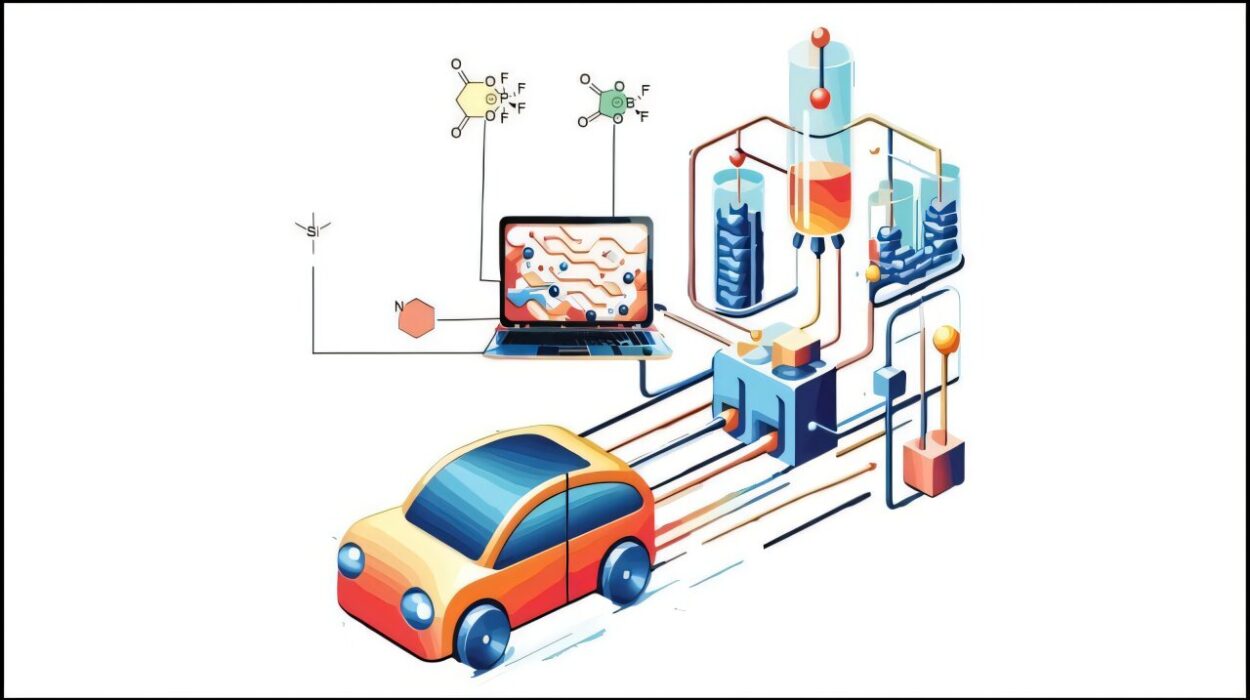Somewhere above us—not quite in the sky, yet not entirely on the ground—an invisible ocean churns, rippling with data, pulsing with electric currents, humming with life. This ocean has no tides, no winds, no moonlight glimmering on its surface. Yet it shapes nearly every moment of our days. It’s where your photos sleep, where your favorite songs wait to sing, where your private messages flow silently from one continent to another. It’s the place where Netflix spins tales, where social media stirs revolutions, where banks shift trillions with the tap of a finger.
We call it “the cloud.” But the cloud is not some vaporous, ethereal nothingness. It is a fortress of steel and silicon, humming behind locked doors, under guards and biometric scanners, fed by rivers of electricity and cooled by industrial gales of Arctic air. It is the hidden architecture behind modern life, as essential as air and water, as omnipresent as the sun. Cloud computing powers everything you love online—even if you’ve never thought twice about it.
This is the story of how that invisible ocean came to be, how it keeps your world spinning, and how it has quietly become the beating digital heart of the 21st century.
A World Before Clouds
Before clouds, there were walls. Thick walls of brick and concrete housing server rooms lit by flickering fluorescent tubes. Businesses bought giant boxes of machines, racks upon racks of servers, and entire teams of IT professionals to install, patch, and protect them. Each server room was its own fortress, a lonely island standing guard over the company’s data. It was a world of finite capacity. A world where a sudden spike in customers could crash a business because the hardware simply couldn’t keep up.
If you launched a website in 1998, your options were stark. Buy a server. Find a data center. Sign contracts. Hire people to keep the machines humming. Each new user was a cost, not merely a triumph. Scale was a dream whispered in boardrooms, but often unattainable.
In that era, the internet was largely static. Websites were simple HTML pages. Images loaded line by line on dial-up connections. Streaming video was a pipe dream. Social media as we know it didn’t exist. Nobody could have imagined hundreds of millions watching live video from a smartphone or an AI voice speaking fluently in dozens of languages.
Yet beneath the surface, engineers were beginning to dream of a different world—a world where you didn’t have to own the machines that ran your software. Where computing could be a utility, as reliable and flexible as electricity. A world where you could scale instantly, without buying metal boxes.
The Spark of an Idea
Around the turn of the millennium, tech visionaries began to glimpse the future. Companies like Amazon were wrestling with seasonal surges that left them with idle servers eleven months of the year, only to see them overwhelmed during holiday shopping sprees. Jeff Bezos and his engineers realized they could reimagine their infrastructure not merely as an internal asset—but as a product they could sell to the world.
Elsewhere, Google and Microsoft were building massive data centers to handle exploding demand for search and email. Startups began to wonder: why can’t we rent space on those machines instead of buying our own?
Cloud computing was born from a simple but revolutionary idea: instead of running software on your own servers, you could rent computing power over the internet from giant providers who took care of the heavy lifting—hardware, power, cooling, networking, security. Suddenly, you didn’t need to be a tech giant to access world-class infrastructure. All you needed was a credit card and a dream.
By 2006, Amazon launched Amazon Web Services (AWS), offering storage and computing as rentable services. Google and Microsoft soon followed. Cloud computing wasn’t just an innovation. It was an earthquake. And the tremors are still rippling through every industry on earth.
The Cloud’s Secret Cities
Imagine, for a moment, standing inside a modern data center. It feels less like an office and more like the interior of a spaceship. Endless rows of black metal racks stretch into the horizon, each stuffed with blinking servers, fans whirring like jet engines. Overhead, a labyrinth of cables snakes across the ceiling. Floors are raised to allow icy air to circulate beneath, while machines exhale clouds of heat.
These are the hidden cathedrals of the digital age. You won’t find signs outside inviting you in. Many are tucked into anonymous buildings in industrial parks. Some lie beneath the frozen soils of Scandinavia. Some hide in deserts where solar panels soak up blazing sunlight. Others float on barges cooled by ocean water.
Inside these data centers, physical hardware hosts virtual machines—software-defined computers that can appear and disappear in seconds. If you open an app on your phone in Paris, a virtual machine might spin up instantly in a Frankfurt data center, process your request, and vanish when it’s done. It’s a silent ballet, orchestrated in milliseconds.
These secret cities store your photos, emails, documents, videos. They keep online shops running through Christmas shopping frenzies. They protect financial transactions worth billions. And they power every digital delight you love.
The Magic of Scalability
Here’s one of the cloud’s greatest miracles: elasticity. If your app suddenly goes viral and attracts a million users overnight, the cloud can instantly allocate more servers to handle the flood. You don’t have to run to the store and buy hardware. You just click a button—or, more accurately, your app’s code does it for you automatically.
This flexibility has unlocked a world of innovation. A teenager can build an app in a dorm room that goes global in days. A new e-commerce store can handle Black Friday traffic without melting down. Media companies can stream the Super Bowl to tens of millions without buffering screens of doom.
During the pandemic, cloud computing kept the world functioning. As offices emptied, Zoom’s video calls soared from 10 million daily meeting participants to over 300 million in a matter of weeks. Without the cloud’s ability to scale, that tsunami of demand would have broken the internet’s backbone.
Cloud Storage: Your Life in the Sky
Once upon a time, a digital photo was a fragile thing. You stored it on your hard drive, hoping your computer wouldn’t crash. Or you burned it to a CD and tucked it in a drawer. Losing a laptop meant losing years of memories.
The cloud changed all that. Now your photos live in vast digital vaults guarded by encryption and redundancy. When you snap a picture on your phone, it silently uploads to a cloud server. Even if your phone sinks to the bottom of the ocean, your memories survive.
Gmail holds decades of your correspondence. iCloud or Google Drive stores your documents. Spotify streams your playlists from distant servers. Netflix stores entire cinematic universes waiting for you to press play. Cloud storage isn’t just convenience—it’s peace of mind. It’s a kind of immortality for your digital life.
Streaming Dreams
Consider what happens when you press “Play” on Netflix. You’re not simply pulling a video file from a single computer. You’re summoning a vast army of servers, load balancers, and content delivery networks (CDNs).
When you click a movie, a data center determines where you are geographically. It finds the closest server holding that film to reduce lag. It chooses the right resolution based on your internet speed. If millions are watching the same blockbuster, the cloud spins up extra capacity so you won’t see the dreaded buffering wheel.
Netflix, Disney+, YouTube, and Spotify—all run on clouds. Even live broadcasts now stream via the cloud, allowing millions to watch simultaneously without melting down the servers. The result is seamless, personalized entertainment—no matter the scale.
The Cloud and Artificial Intelligence
If there’s one technology that has leapt forward thanks to cloud computing, it’s artificial intelligence (AI). Training AI models used to be prohibitively expensive, requiring supercomputers only governments or tech giants could afford. Today, thanks to the cloud, startups and researchers can rent powerful graphics processing units (GPUs) by the minute.
When you ask your smartphone’s virtual assistant a question, your voice travels through the internet to a cloud server that converts your words into text, searches for the answer, and speaks back—all in seconds. When you upload a photo to Facebook and it suggests who’s in the picture, that’s the cloud running facial recognition algorithms in the background.
AI depends on vast quantities of data and immense computing power. The cloud makes both available to anyone with a good idea. It democratizes intelligence, making tools once reserved for the few accessible to the many.
Gaming Without Consoles
For decades, gamers needed powerful consoles or PCs to play top-tier video games. Graphics were heavy. Games took hours to download. Hardware was expensive. But the cloud is changing that, too.
Cloud gaming services like Xbox Cloud Gaming, NVIDIA GeForce NOW, and Google’s former Stadia stream entire games from remote servers. You could be playing a blockbuster video game on a cheap laptop or even your phone. The heavy lifting happens in the cloud, sending you only video frames while your button presses travel back upstream.
While challenges remain—latency, bandwidth costs, and data caps—cloud gaming hints at a future where the world’s most sophisticated games run on any device, anywhere.
Business in the Cloud
Modern business lives in the cloud. Companies run entire operations through cloud services. Salesforce hosts customer relationship tools. Slack connects teams worldwide. Shopify powers millions of online shops. Financial institutions, manufacturing plants, and healthcare systems rely on cloud-based platforms for data analysis, customer service, and security.
Businesses no longer need to guess how much computing power they’ll need years in advance. They can expand or contract on demand, paying only for what they use. It’s a financial revolution as much as a technological one.
Securing the Digital Sky
Of course, with great power comes great responsibility—and great risk. The cloud is a fortress, but it’s also a target. Hackers dream of cracking the vaults that store personal data, financial records, trade secrets. Security teams wage a relentless war against cybercriminals who probe for vulnerabilities night and day.
Major cloud providers invest billions in security. Data is encrypted in transit and at rest. Facilities are protected by armed guards, biometric locks, and constant surveillance. Redundant backups ensure that even if a data center is destroyed, your information survives elsewhere.
Yet breaches still happen. Human error remains a stubborn vulnerability. The cloud is both resilient and fragile—a paradox of the modern age.
Privacy in the Cloud Era
As our lives move into the cloud, questions of privacy grow sharper. Who owns your data? Who has the right to see it? Can governments demand access? Can advertisers track your digital footsteps?
Europe’s General Data Protection Regulation (GDPR) and similar laws have forced companies to rethink how they collect, store, and process data. Users are more conscious than ever of the trails they leave behind. The cloud holds incredible power—but also carries a moral imperative to protect the dignity and privacy of individuals.
This tension will define the next decade of digital life. Cloud computing is not just technology—it’s politics, ethics, and human rights woven together.
The Cloud and Climate Change
As the cloud grows, so does its carbon footprint. Data centers consume staggering amounts of electricity, both to power servers and to cool the heat they generate. By some estimates, global data centers account for roughly 1-2% of worldwide electricity usage—a figure that continues to rise.
The tech giants are racing to address this. Google claims its data centers are carbon neutral. Microsoft pledges to be carbon negative by 2030. Facebook and Amazon invest in wind farms and solar arrays. Some data centers relocate to colder climates to reduce cooling costs, or submerge servers in liquid baths to dissipate heat.
Yet the challenge remains vast. The same cloud that powers your digital life must grapple with its environmental consequences. The future of cloud computing must also be green.
A Sky Without Limits
Every day, the cloud expands into new frontiers. Smart homes connect doorbells, thermostats, and lightbulbs to cloud services. Medical research shares genomic data worldwide through cloud platforms. Autonomous vehicles rely on real-time cloud updates to navigate city streets. Even the James Webb Space Telescope streams cosmic data through cloud systems so astronomers can peer into the birth of galaxies.
The cloud is no longer merely a convenience. It’s becoming the default infrastructure for human knowledge, creativity, commerce, and communication.
We stand at the dawn of a new era. Quantum computing looms on the horizon, promising unimaginable processing power. AI grows more capable each day. The Internet of Things connects billions of devices. All of it depends on the cloud.
The Human Side of the Cloud
Yet amid all the dazzling technology, the cloud remains a profoundly human creation. It is built by engineers who work late nights to patch security holes, by warehouse crews installing racks of servers, by software developers writing code that connects billions of people. It is funded by dreamers and investors. It’s used by grandparents FaceTiming grandkids, artists sharing music, students learning languages, lovers sending secret texts.
It’s easy to think of the cloud as cold metal and blinking lights. But ultimately, it’s a testament to humanity’s insatiable desire to connect, share, and explore.
The cloud doesn’t merely store data—it stores pieces of our hearts, our memories, our ambitions. It preserves letters between old friends. It archives family photos. It allows a musician in Mumbai to collaborate with a producer in Los Angeles. It lets ideas travel at the speed of light.
The Sky Above and the Ocean Below
So the next time you send a message, stream a movie, store a photo, or summon an AI voice from your phone, remember: you are touching the cloud. You are tapping into a digital ocean vast beyond imagining, humming with the dreams of billions. You are riding invisible beams of light bouncing between distant cities.
Cloud computing powers everything you love online. It is as close as your fingertips, as distant as the stars. It is the silent engine of your digital world—and it’s only just beginning to show us how high we can soar.





